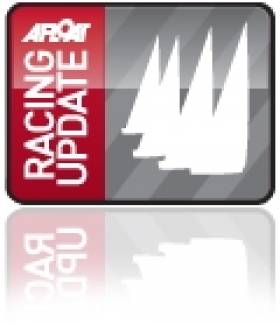Displaying items by tag: one metre
One Metre Model Yacht Racing Kicks off at Howth
#modelyachtracing – Seven skippers from Howth and East Down Yacht Clubs, and Carrickfergus Model Boat Club braved a cold and wet start to the Irish 2013 IOM circuit with the first event of their series being hosted by Howth Yacht Club on Sunday 13th of January.
Competitors were kept on their toes for this first race meeting of the year with International Model Yacht Umpire Gordon Davies officiating as Race Officer. Gordon's considerable experience ensured competing skippers enjoyed true windward/leeward courses of around 350m in length with tight and unbiased start lines, despite the morning's fickle & shifty 3-6 knot Westerly which was to fall away to almost nothing later in the morning as the dreaded rain crept in. He also set up a control area on No.2 pontoon's end finger and quickly got the day's racing underway.
Howth's Gilbert Louis sailing his V6, took the first bullet closely followed by East Down's Brian O'Neill sailing his immaculately prepared wooden Swallow, with fellow Howth skipper Des Dwyer, coming 3rd with his Disco.
After this first race the morning's leader board was set to be dominated by a very close battle between Howth's Des Dwyer & Fergal Noonan; Fergal sailing his Reggae. The fickle morning breeze offered no set pattern and the best plan of action turned out to be good starts, good boatspeed and keen concentration as neither side of the course or even the central route offered and real advantage on the upwind legs. Both Howth skippers demonstrated tremendous pace as they got to grips with getting the best out of their tuning sets for the fickle conditions. At the lunch break just ¾ of a point separated them with early pace setter Gilbert Louis following in 3rd, Brian O'Neill in 4th, fellow East Down skipper Don Howes sailing his Ikon in 5th, with Bill Scott & Wayne Lavery of Carrickfergus Model Boat Club holding up the rear in 6th & 7th places sailing a MkII Stealth and a MkI Widget.
Special mention must go to Bill and Wayne - newcomers to the IOM fleet, and sailing their first competitive event. After receiving some tuning assistance from their fellow competitors, both skippers' pace improved considerably and they began to put in some impressive results as the morning progressed. It was a great pity the late morning rain put pay to Bill's radio, meaning his event was over, and Wayne too suffered gremlins with winch problems on his Widget, also meaning he had to sit out a couple of the races in the afternoon to effect repairs.
After the morning's first 6 races all of the competitors were very glad of a much-needed lunch break. Thanks must go to the superb hospitality of Howth Yacht Club, offering a varied and appetising menu of piping hot bar food with coffee. This was just the ticket to revive the cold and sodden competing skippers and helping restore their enthusiasm for the afternoon's onslaught.
After the lunch break wind & weather conditions improved considerably. The rain ceased and the breeze filled in to around 8-10 knots from the same Westerly direction, but also steadied somewhat.
In these breezier conditions Gilbert Louis' V6 came alive with the Frenchman taking 4 bullets of the 6 remaining races. Only first places taken by the two East Down boats prevented him making an afternoon's clean sweep. However, the final outcome of the event was not decided until the last race as just 4 points separated the first 4 boats going into it.
Don Howes took his first bullet of the day in this final race with his much improved Ikon, and this result enabled him to just scrape into to 3rd over all. He was followed closely by Gilbert Louis finishing 2nd in the race and this placing gave him just enough to claim the overall title. Fergal Noonan's came in 3rd, but it wasn't enough to prevent Gilbert's overall win with Fergal dropping down to 2nd on the final leader board tally.
Our thanks goes to our O.O.D. Gordon Davies, for setting superb courses, along with some sharp observations keeping us all on our toes, and also for his sound advice for all the fleet on rules interpretation. These little nuggets of information will help add to our rules knowledge base.
Thanks also to Howth Yacht Club, particularly for the very welcomed and reviving hot lunches, and finally a big thanks to our overall winner Gilbert Louis, for all the time and effort he put into organising this first event of the 2013 season and making it a thoroughly enjoyable one despite inclement weather doing its best to dampen our enthusiasm.
Some very close racing on great courses, superbly officiated was the day's winner too.
For more information on the Irish IOM Class and racing schedule please visit: http://www.iomireland.org/
Results:
Position Skipper Boat Club
1 Gilbert Louis V6 Howth YC
2 Fergal Noonan Disco Howth YC
3 Don Howes Ikon East Down YC
4 Brian O'Neill Swallow East Down YC
5 Des Dwyer Reggae Howth YC
6 Wayne Lavery MkI Widget Carrickfergus MBC
7 Bill Scott Stealth MkII Carrickfergus MBC
O.O.D. Gordon Davies
Report compiled by Brian O'Neill and photographs by Bill Scott.





























































